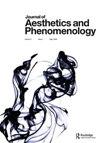Automating Art: Gilbert Simondon and the Possibility of Independently Creative Machines
IF 0.2
0 PHILOSOPHY
引用次数: 0
Abstract
The modern concept of creativity as an attribute of human beings has, since its very beginnings in the 18 Century, routinely been defined in opposition to that of the programme. In Edward Young’s famous letter “Conjectures on Original Composition” from 1759, the original creativity of the genius is radically distinguished from anything that can be accomplished through the execution of a plan. “An original,” he writes, “may be said to be of a vegetable nature; it rises spontaneously from the vital root of genius; it grows, it is not made.” The conviction that true creativity is a spontaneous and intuitive process, which cannot be attained through following a set of predetermined rules and procedures still endures in the popular imagination today. It is the principle underlying most of the common objections to the idea that machines might one day be considered independently creative. For if a computer can only follow a sequence of operations that it has been programmed to perform, so the argument goes, then creative invention must – by definition – be beyond their capabilities. Ada Lovelace is often credited with being the first to formulate this objection as long ago as 1843. As she famously wrote, with respect to Charles Babbage’s theoretical computer the Analytical Engine, “[the machine] has no pretensions whatever to originate anything. It can do only whatever we know how to order it to perform.” Those arguing against this prevailing doxa and in favour of the possibility of fully autonomous, independently creative machines typically advance a cognitivist view of creative behaviour that is more functional and less romantic than that invoked by Edward Young. The standard claim is that once we have expunged all mystificatory remnants of innate talent, divine inspiration, or individual genius, what we are left with is a psychological process that can be described in formal computational terms and – theoretically at least – implemented in a real machine. This debate recurs frequently, most recently as a result of a series of high-profile machine learning projects aimed at recognising and reproducing human creative processes in the arts. Notable examples of this trend include Google’s major Magenta project launched in 2016 to “explore the role of machine learning in the processes of creating art and music,” and the research team at the University of Tübingen who trained a neural network to recreate photographic images in the signature style of canonical artists such as Van Gogh or Edvard Munch. Possibly the most well-known single example was the exhibition in 2016 of a “new” Rembrandt painting at the Cannes Lions International Festival of Creativity. The painting was the striking result of an ambitious digital venture entitled “The Next Rembrandt,” devised by the Dutch自动化艺术:吉尔伯特·西蒙顿与独立创造机器的可能性
自18世纪诞生以来,将创造力作为人类属性的现代概念,一直被常规地定义为与计划相反的概念。在爱德华·杨1759年的著名信件《关于原创创作的猜想》中,天才的原创创造力与通过执行计划可以完成的任何事情都有根本的区别。“原作,”他写道,“可以说是植物性的;它自发地产生于天才的生命之根;它是生长的,不是造出来的。”真正的创造力是一种自发的和直觉的过程,不能通过遵循一套预定的规则和程序来实现,这种信念今天仍然存在于大众的想象中。这是大多数反对机器有一天可能被认为具有独立创造力的观点的基本原理。这种观点认为,如果计算机只能按照程序规定的操作顺序进行操作,那么,从定义上讲,创造性发明肯定超出了计算机的能力范围。早在1843年,Ada Lovelace就被认为是第一个提出这个反对意见的人。对于查尔斯·巴贝奇(Charles Babbage)的理论计算机——分析机(Analytical Engine),她写了一篇著名的文章,“(这台机器)没有任何创造任何东西的自命。”它只能做我们命令它做的事。”那些反对这一主流观点、支持完全自主、独立创造机器的可能性的人,通常会提出一种关于创造性行为的认知主义观点,这种观点比爱德华·杨(Edward Young)提出的观点更实用,更不浪漫。标准的说法是,一旦我们清除了所有神秘的先天天赋、神的灵感或个人天才的残余,我们剩下的是一个可以用正式的计算术语描述的心理过程,并且-至少在理论上-在真正的机器中实现。最近,一系列备受瞩目的旨在识别和再现人类艺术创作过程的机器学习项目引发了这一争论。这一趋势的著名例子包括b谷歌在2016年推出的大型Magenta项目,该项目旨在“探索机器学习在创作艺术和音乐过程中的作用”,以及宾根大学(University of tbingen)的研究团队,他们训练了一个神经网络,以重现梵高或爱德华·蒙克(Edvard Munch)等著名艺术家的标志性风格的摄影图像。最著名的一个例子可能是2016年在戛纳国际创意节上展出的伦勃朗的一幅“新”画。这幅画是荷兰人设计的一个雄心勃勃的数字项目“下一个伦勃朗”(The Next Rembrandt)的惊人成果
本文章由计算机程序翻译,如有差异,请以英文原文为准。
求助全文
约1分钟内获得全文
求助全文

 求助内容:
求助内容: 应助结果提醒方式:
应助结果提醒方式:


